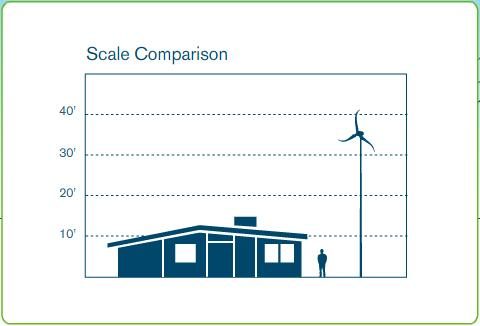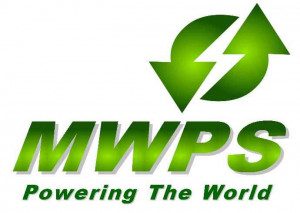How to sell electricity back to the grid? A detailed guide to selling electricity back to your local utility and how to make a profit with a larger sized wind turbine installed on your private land. What is the right size wind turbine and what do I need to do? We have three topics for which we receive questions nearly every day and basically, the topics are always of one and the same nature:
• Selling power back to the grid
• Selling energy back to the grid
• Selling electricity back to the grid
…and we always answer that pioneering individuals and small businesses are already using wind all over the world to produce clean excess electricity and turn a profit
So how can I sell power back to the utility grid and what do I need to do?
With a correctly sized Wind Turbine and the correct inverter system, you can safely sell power back to the utility grid. The real question is can I sell power back to the utility company?
Most states in the US have net metering bills that basically say the utility company is required to buy the power back from you at the same rate you buy power from them. The states that don’t have net metering bills typically only pay the wholesale cost of the power about 1-3 cents.
So there is no general answer as to how much you will get paid for your excess electricity and it is best that you first check with your local utility company. Each single utility company has different interconnection standards that have to be met before they will allow you to sell power back to their grid. The fortunate thing about these different interconnection requirements is that modern inverters have all of the safety equipment built into them as standard components. So some of the equipment a utility company may ask you to add is already inside the inverter.

“Net metering” is the simplest way to set up a grid-tie system. In such a system you only have one utility kWh meter and it is allowed to spin in either direction depending on if you are buying or selling energy. In a non-net-metered system, the utility company will require that you install a second kWh meter to record any excess energy that you sell back to them. To find out if your state offers “net metering” or any other incentives for installing a renewable energy system, click on the following link (www.dsireusa.org).
Remember, a “net metering” law for your state doesn’t necessarily apply to rural electric cooperatives so give your utility company a call before going any further.
Just as ‘Smart Grids’ are being promoted by many governments, residential energy production is now being encouraged and subsidized by many states. So the next question is if you want to go ahead in becoming a private energy producer: ‘What size wind turbine and which Grid-tie inverter is right for me?
The next step is to figure out what size system will work best for you. This can be tricky because it all depends on how much energy you want the system to produce per day, what your own average kWh consumption per month is, what your utility rate is per KwH and of course how much money you want to spend on a system. Of course, your location is a big factor in determining how much energy any grid-tie system will produce since everybody knows that Texas gets a lot more wind than New Mexico. The higher your utility rate is (¢ per KwH), the more economical a grid-tie system becomes since you are offsetting expensive energy that you would’ve bought from the utility company with clean free energy from the wind.
A suitable basic residential wind turbine system, providing mainly electricity to your home or small business, usually start in the 2Kw range. How exactly an On-Grid System with ‘Net metering’ works can be seen in the short demo video below which is based on Southwest Windpower’s SkyScream (TM) 3.7.
MyWindPowerSystem has a wide range of suitable Off-Grid and On-Grid Wind Turbine systems to choose from. This includes systems manufactured by our supplier in Asia which are well below the purchase price of the US manufactured SkyScream ™ 3.7 from Southwest Windpower. To see the full range of Turbine Systems available from MywindPowerSystem, click here.

One of our case studies demonstrates that when your idea in investing in a wind power system has been thoroughly planned and executed, an attractive additional income can easily be generated, day in day out.
Karl Brandl, a project manager for a gas installation company in Texas, is moonlighting as a small-time energy tycoon. In his second job, he’s got the kind of extra income most business people can only dream of. His large sized 100Kw wind power generation system pays him an extra $9,000 per year on top of producing all the energy he needs to power his Houston home for free. The money comes from an emerging market in renewable energy credits (RECs), part of a program in many states where electricity suppliers that are required by law to invest in renewable energy buy tradable certificates from sources like Brandl. It’s just one-way individuals and small businesses are making money off clean energy.

Brandl says that he has never made a better investment—especially with today’s unstable energy market. “I don’t think I can find any other method which can make me a return of $9,000 per year [just for having wind power], and that’s if the price of energy doesn’t go up,” says Brandl. For him, the $80,000 upfront investment in the hardware and installation he made two years ago (Texas paid the remaining $70,000 through the state’s Clean Energy Program) is worth the money he’ll be making in the long run.
While the high cost of equipment, complicated state governing rules, and inefficiencies in the installation process still won’t allow small-scale energy systems to compete directly with the established utilities, private energy production is paying off. With energy prices fluctuating and instability in many oil-producing countries, individuals and small businesses are touting the profits they’re making off their wind power systems as the wave of the future. These pioneers are finding that producing clean energy pays dividends that rival Wall Street “There is a market that’s growing, and we’re just at the front end of it,” says Pete Roman Wallis, CEO of Bromative Solutions LLC, a market-research consultancy for the wind power industry.

ADDITIONAL INCOME WITH CREDITS FOR SALE.
Through net metering, an individual or business produces energy during the day, feeds it back into the grid, then gets credited for the amount of energy produced. Though customers can’t yet sell electricity to other customers, since they’re constrained by having to send their electricity through the existing grid, there are ways to make a profit. The most common way is through selling renewable-energy credits, which are credits clean-energy producers receive and sell to utilities so that utilities can meet their quotas for deriving energy from renewable sources.
Brokers get in touch with local energy producers and purchase the credits, then aggregate them and sell them to the larger utilities. The producers usually get between $200 and $300 for every megawatt hour of energy they generate in a given year. They’re not selling the energy itself, but instead, are being rewarded for producing their energy cleanly and sustainably.
STREAMLINING
The renewable energy credit practice will continue to grow as more and more states start to make this mandatory. By 2020, every utility will have to produce a percentage of its electricity through renewable means, says a spokesman Southwest Windpower, a producer of small-scale, consumer size, wind operated turbines. If a utility doesn’t produce as much as it’s supposed to, it will be asked to pay a fine..
Normally, the companies that buy and sell credits like to buy them in bulk, but they have been buying them from individual homeowners and small businesses because they want to have a diversity of supply.
Approximately 20% of utilities in the U.S. offer green pricing programs, by which customers can pay a low premium to purchase renewable energy. Yet, only a few foci on facilitating smaller scale, customer-generated energy. Most green pricing programs use energy from larger projects, such as wind farms. Currently, the only way for individuals to sell their energy to consumers is through a program run via a utility that is designed to do so, says a policy adviser at the National Renewable Energy Laboratory in Golden, Colo.
Wind power will definitely be the next big thing even for the small scale investor. At the end of June, Southwest Windpower introduced a new small residential wind generator, the Skystream 3.7. It’s the first fully integrated wind generator designed specifically for the grid-connected residential market, and it marks a significant step forward for tomorrow’s small wind farmers. Southwest Windpower produces 2,000 wind generators a month, 70% more than one year ago, and profits are expected to double in the next 12 month as well.

Selling power back is the future and for today’s clean energy pioneers who already sell electricity back to the utility, payback is quickly changing to paycheck






EnergyControl and the writer reply to Selling Electricity Back to the Grid,Selling Power Backto the Grid & Selling EnergyBack to the Grid. in
Southern Africa.
YoursTruly
Eng.Len Dickinson
Energy Control(Pty)Ltd. and the writer are committed to Renewable Energy WindPower IPP Turbines and submit our expressions of interest in
“Selling Electricity Back To The Grid”,”Selling Power Back To The Grid”and “Selling Energy Back To The Grid” in Southern Africa.
Yours Truly,
Energy Control(Pty)Ltd.
Eng.Len Dickinson-REFIT Operations Director
With these kinds of returns, it makes you want to move home to somewhere more windy. I’m sure it won’t be long before property prices start to reflect the wind resource available, especially if turbine prices start to fall. This industry is in it’s infancy so perhaps before long every home will have one?
This is well good info and good read. Its important to know where one can obtain info at about selling electricity back t the grid. thx a lot 🙂
anyone thinking they are going to sell energy back to the electrical grid w/ a small wind turbine is living a pipe dream. you would be lucky get half of your homes energy consumption. please read a book on wind energy before investing money.
have you ever used a CYCLONE 2 rowing ergometer? these impliments are much better than “rowing machines” the output of each workout is monitored by a computer measuring different level of energy used by a person. one of those lebels is wattage. further research tells me that it takes 8 watts to generate a volt. my workouts produced as many as 46,000+ watts, or as much as 6000 volts. am i correct in assuming 8 watts generated is equal to 1 volt? are the units above the same as the units in your industry? if not,can they be converted without losing too much power or profit?
I am interested in putting turbineson my land can u send me info on that
is it feasible to sell back–to a local provider–the electricty generated by a rowing ergometer? i’m aware additional equipment is needed to convert AC to DC current. i’m trying to think of ways to increase my benifit-income by selling power generated during a workout..
i was head injured some time ago. in order to re-strengthen atrophied muscles, i found workouts at a local fitness facility necessary, thusly, i used a rowing ergometer.
this apparatus had monitors to measure the output of each workout. several times i reached levels of 46,600 watts in 41-minute settings. the above levels are due to increase over time and use. they are also vastly greater than the levels i’ve seen in my research.
am i on to something here? could i increase my income by re-selling this power to a local provider?